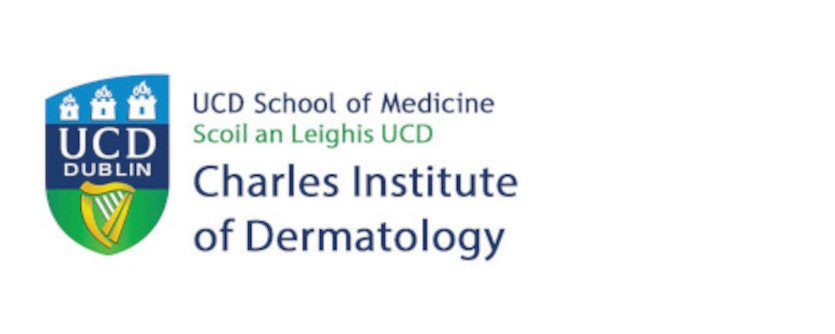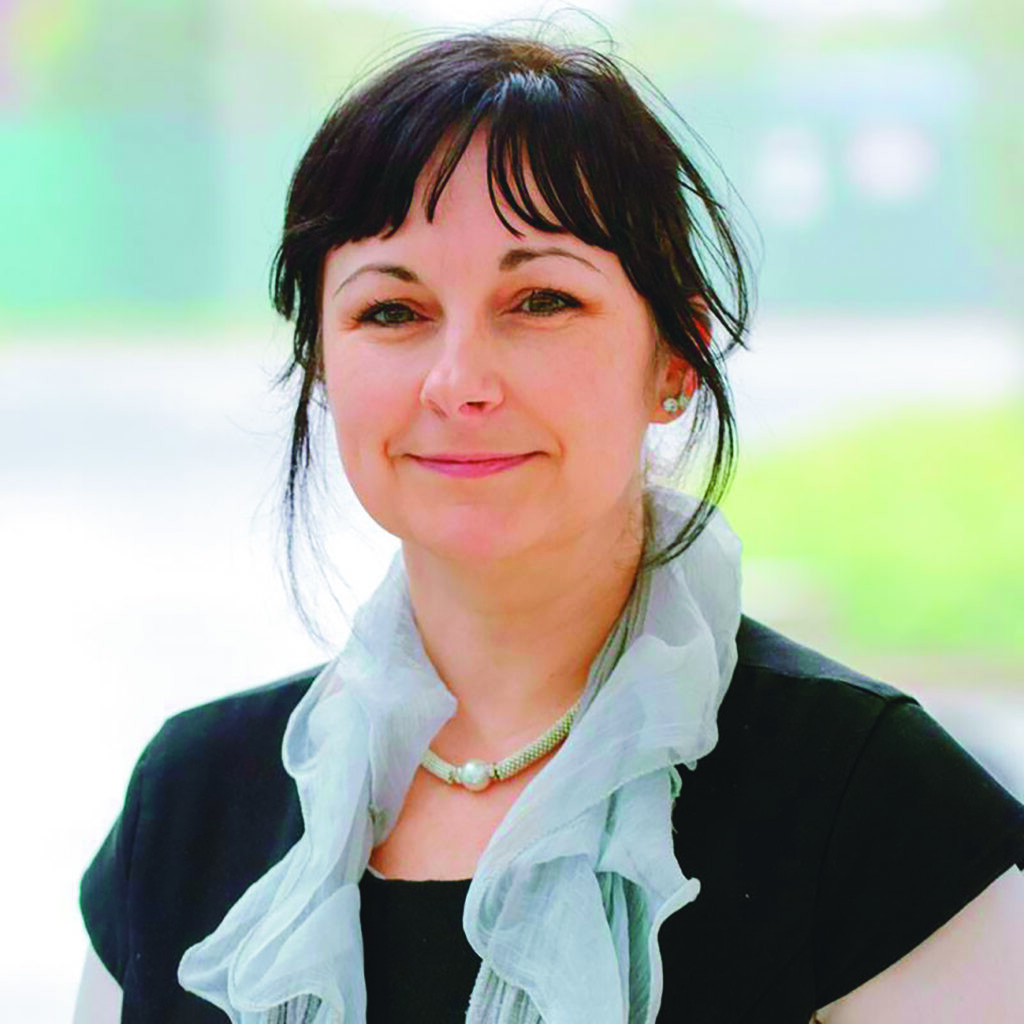Attendees at UCD’s Charles Institute Seminar Series recently heard a presentation by Prof Amanda McCann PhD of UCD’s Conway Institute and School of Medicine on current translational research into triple-negative breast cancer
UCD Charles Institute Seminar Series

The Charles Institute, Ireland’s national dermatology research and education centre, hosts a range of guest speakers who cover a variety of topics ranging from skin cancer to psoriasis, among others. The series, which is sponsored by RELIFE (part of the A.Menarini group), is designed to provide expert advice from a range of distinguished national and international experts in their respective fields and is chaired by Prof Desmond Tobin, Full Professor of Dermatological Science at UCD School of Medicine and Director of the Charles Institute of Dermatology. The seminars are broadcast to attendees with a special interest in dermatology and cutaneous science in other locations, who access the talks remotely via an audio-visual link.
Attendees heard a presentation from Prof Amanda McCann, Principal Investigator and Senior Conway Fellow at the UCD Conway Institute and Professor in the UCD School of Medicine. The work of Prof McCann and her colleagues is primarily focused on understanding the mechanisms underlying chemoresistance in women presenting with triple-negative breast cancer (TNBC), including comparative approaches to oncology.
Prof McCann delivered a talk titled ‘Translational Oncology with a Difference’ and discussed TNBC and the potential role that therapeutic-induced senescence (TIS) plays in chemoresistance. She also provided an overview of her work with colleagues in extracellular vesicles (EVs), particularly in the context of investigating the protein and chemotherapy profiling of EVs harvested from TIS-TNBC. Dr McCann also described the potential for monitoring EVs in the primary and metastatic settings, as well as the value of comparative oncology approaches to investigate the similarities between human TNBC and feline mammary adenocarcinoma (FMA), including how a comparative oncology approach has the potential to benefit both of these patient groups.
Key proteins
Prof McCann explained that her work has shown that there are key proteins released in EVs from chemotherapy-induced senescent cells compared to control cells, “and we feel that this is really relevant in terms of how senescent cells can maintain their viability and continue to interact, not only with the surrounding tissue milieu, but also distally in the formation of pre-metastatic niches,” she said.
She provided an outline of research projects conducted with her colleagues and a brief overview of the different varieties of cellular senescence, and told the seminar: “Therapeutic-induced senescence is the type of senescence that can be induced when cells are challenged by treatment, eg, with radiotherapy or chemotherapy.
“Ideally, when cancer cells are treated with chemotherapy, we would like them to undergo cellular apoptosis, resulting in apoptotic bodies, which can be very effectively cleaned away in the local tumour microenvironment,” Prof McCann continued. “However, we know these cells can be quite resilient and can undergo senescence. These senescent cells can be easily visualised in the laboratory by positive staining for the enzyme beta-galactosidase.
“What’s important is that these cells are still viable,” she told the attendees. “They are non-replicating cells, but they are still producing growth factors and cytokines like transforming growth factor. Approximately 40 cytokines have been identified in the senescence-associated secretory phenotype (or SASP). There is evidence now that over time, these cancer-senescent cells may be able to re-enter the cell cycle, as they are metabolically active. So it’s important to remember that although they are not replicating, they still have a very intuitive interaction with the environment around them, and possibly in distal places also.”
In terms of the comparative approach to research, Prof McCann explained that in vivo cancer research models with rodents may not truly reflect the tumour microenvironment in human disease, as rodents do not naturally develop cancer in the laboratory environment. However, cancer in domestic felines occurs spontaneously “and in the case of feline mammary/breast tumours, they display a clinical presentation, pathophysiology and disease progression comparable to human TNBC,” she said.
Importantly, said Prof McCann, cats naturally recapitulate the development of metastases and these animals are genetically diverse, immunocompetent, and show a compressed treatment response and compressed pathological response. Laboratory rodents, on the other hand, do not naturally recapitulate the development of metastases, do not entirely mimic the treatment responses of humans, have shorter life spans, and are immunosuppressed and genetically uniform.
In vivo cancer research models with rodents may not truly reflect the tumour microenvironment in human disease
“It’s important to remember that in comparative oncology, the disease is never induced in the animals being treated; the cancer occurs naturally,” said Prof McCann. “Cancer affects around 40 per cent of cats and mammary tumours are the third-most common… 80-to-90 per cent of FMAs are typically high-grade invasive carcinomas and of those, around 70 per cent display a basal-like phenotype very similar to human TNBC.”

Metastases
Outlining her research, she commented: “The area of most interest to us is, how can we predict where TNBC is going to metastasise to,” Prof McCann said. “We know that the sites are the brain, liver and lungs, but [we want to find out] is there any way of predicting this ahead of these occult metastases being detectable on a clinical scan.”
She provided a synopsis of her work to investigate whether the removal of the key proteins and chemotherapy in extracellular vesicles released by therapeutic-induced senescent cells, explained by cancer senescent cells, remain viable despite chemotherapeutic challenge. Among her findings, Prof McCann explained that “the cytokines IL-6, IL-8 and TNF alpha are key cytokines that form part of the senescence-associated secretory phenotype (SASP). We found that these are not only secreted into the growth medium, but are also compartmentalised and packaged into the extracellular vesicles, again providing an enrichment for what might be happening distally in the development of pre-metastatic niches,” said Prof McCann.
“We found 142 proteins that were in higher abundance in EVs generated from therapeutic-induced senescent cells compared to EVs from non-treated cells, and 69 of these were predicted activators of cell growth and proliferation. That is telling us two things,” said Prof McCann. “Firstly, we know that cancer senescent cells are not proliferative, so there’s no need for them to have a lot of factors that would be encouraging that, so that would be a very clever way of removing these from the cell in extracellular vesicles.
“It also means that if these exosomes are travelling distally, they now have quite a lot of ‘ammunition’ to encourage cell growth and proliferation at any of the pre-metastatic niches in which they may find themselves. So, what is of benefit to the senescent cells to maintain their viability really has dark effects in relation to what can happen when these extracellular vesicles travel distally and start impacting their contents and information on where they land.”
During the course of their research, Prof McCann and her colleagues showed that when mass spectrometry data are compiled on plasma from humans compared to felines, there is an overlap of 184 proteins, and two of these proteins are accepted markers that identify enrichment for exosomes within the extracellular vesicle component.
Prof McCann concluded: “Understanding and exploiting senescence to improve cancer treatment is imperative — therapeutic-induced cancer senescent cells release more EVs than non-senescent cells,” she told the seminar. “Cancer senescent cells maintain viability in part via the release of EVs, trafficking out key proteins that could result in their demise, but also proteins that are involved in pre-metastatic niche formation.
“Macromolecular EV/tissue profiling of human and veterinary patients with ‘basal-like’ TNBC and FMA, respectively, has clinical potential.”
Extracellular vesicles
During an interactive Q&A session, Prof Tobin touched on the laboratory-based context of Prof McCann’s work in a monoculture environment versus in a tissue histoculture and asked, “to what extent is modelling in vitro a reflective dynamic in terms of both the production and release of EVs?”
Prof McCann responded: “That’s an absolutely crucial question. The 2D work that we published has given good insight into what’s happening in relation to the packaging of key proteins in these EVs. We would love to be able to work within the 3D environment — there, we could bring in not just epithelial cells, but also stromal cells and other cells… I’m sure the results [in 3D] would give key additional information to our findings in 2D.
“In relation to what’s happening in the ‘real’ situation, all we can say is that in a paper from 2018, they were able to enumerate the fact that there were more EVs in the circulation of patients with advanced breast cancer,” she continued. “So if we know that these EVs represent the tumour from which they have been derived, one could suggest that you could look at some of the membrane components of the primary tumour, and then see how these correlate with the membrane components on the EV progeny.
Due to the blueprint nature of these EVs, Pharma are keen to harness this for the use of these EV progeny to selectively target chemotherapeutics back to the very cells that produced them, which of course would minimise potential side-effects of treatment.”
RELIFE has had no input into the content of this article or series of seminars













Leave a Reply
You must be logged in to post a comment.